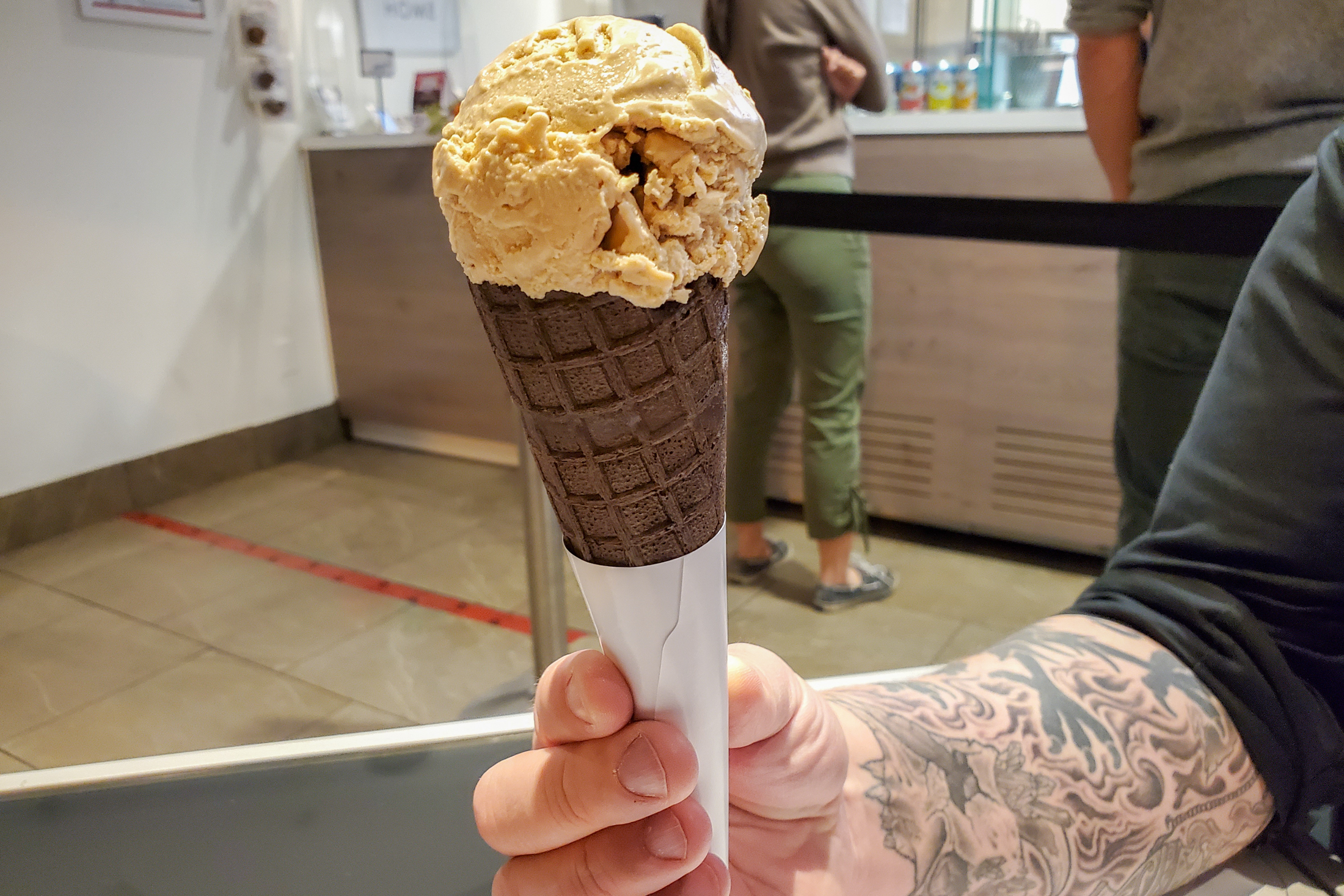Gelato tastes better when the maestro making it has an intimate knowledge of every ingredient.
That was my main takeaway after spending an intimate evening in a special Kitsilano classroom, mixing my first-ever attempt at gelato with Uno Gelato’s resident expert, Andrés Bermúdez.
Even before we began mixing our ingredients, Bermúdez had our small group taste some sugars, nuts, and sweets separately. As we let each flavour settle on our tongues, it became increasingly apparent that Bermúdez has gelato-making down to a fine science. Each ingredient was added in precise amounts. The resulting dessert fully captured the chosen flavour—for our class, it was pumpkin cheesecake. To my surprise, each spoonful was like eating a creamy slice of cake.
I was less surprised to learn that Bermúdez studied at Carpigiani Gelato University in Italy—yes, there is an entire school dedicated to making gelato. A 90-minute class might not be not long enough to turn us all into gelato maestros ourselves, but his tips could help you mix creamier, more flavourful gelato of your own, if you’re planning to whip up a batch at home.
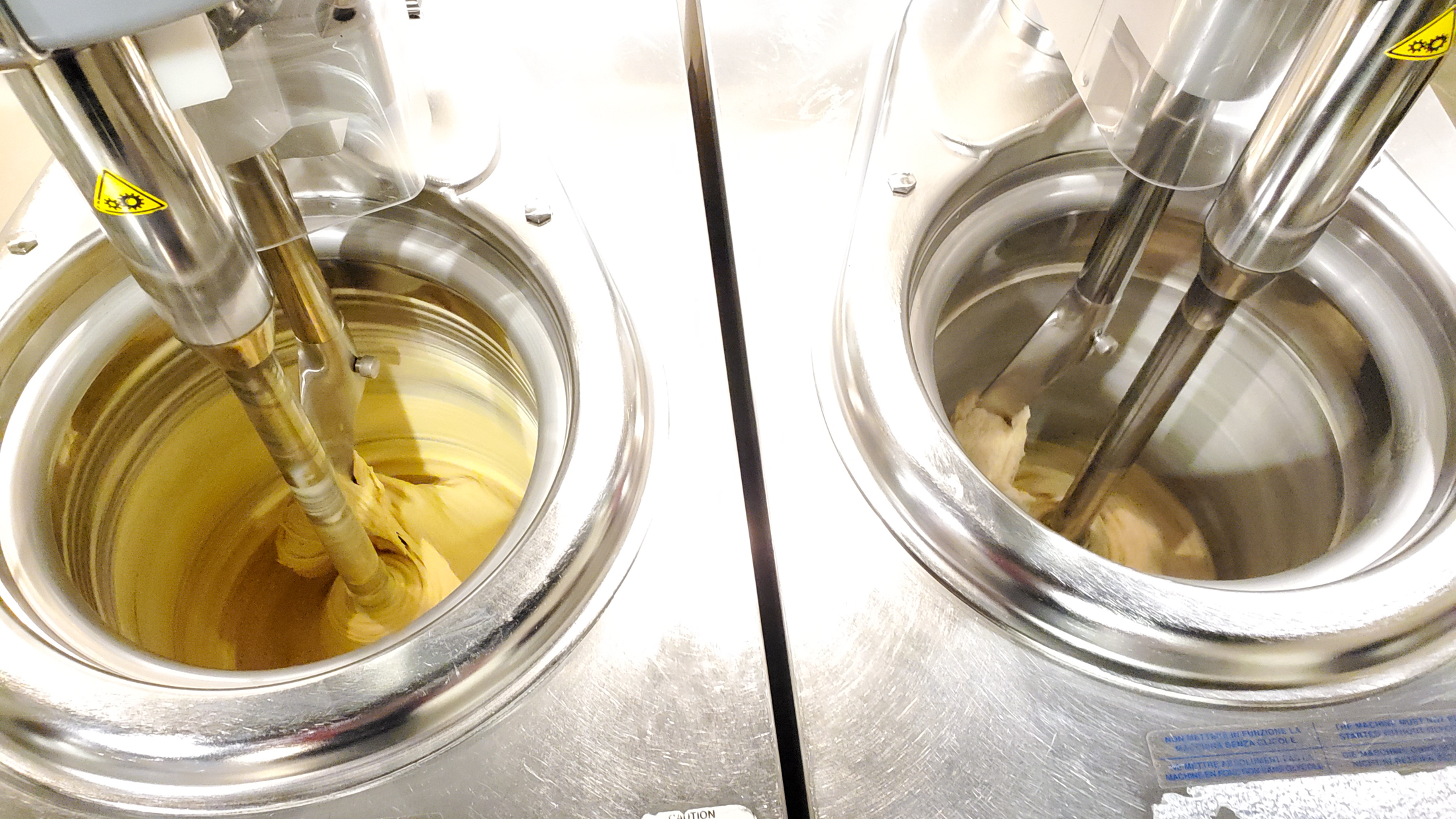
1. Use multiple kinds of sugar to control the sweetness
Sugars don’t just add sweetness, they are essential to the body and softness of frozen treats. That’s because sugar has anti-freezing properties; too little sugar and you wind up with a hard cream that is impossible to scoop. To keep your gelato from getting too sweet, swap some of the table sugar in your recipe with dextrose, which is less sweet and lowers the freezing point of water by twice as much—resulting in a softer gelato that won’t overload your sweet tooth. If you want to bump up the sweetness, try adding some maple syrup instead.
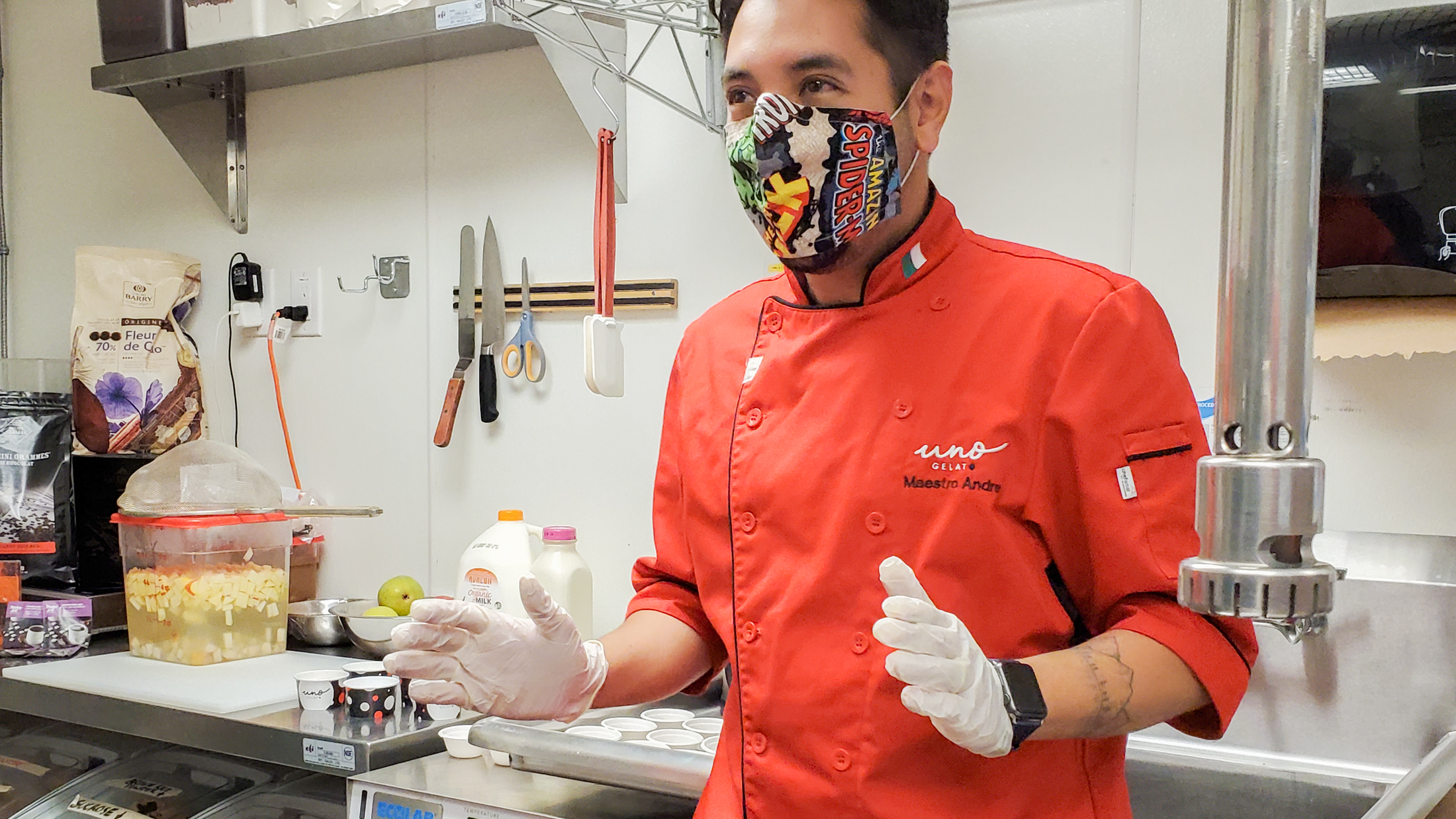
2. Use an ice cream maker
Not everyone has an ice cream maker in the cupboard, but Bermúdez says it’s a must-have, especially if making gelato becomes a habit. The machine churns your mixture while freezing it, creating small ice crystals for a smooth and creamy result. This saves you from having to remove your gelato mixture from the freezer and churn it by hand every 30 minutes (though if you prefer the more hands-on approach, we won’t judge).
3. You can use eggs as stabilizers
This tip might spark some debate, but I prefer to keep homemade recipes simple. Eggs are more commonly associated with ice cream, but they work just as well for binding your gelato ingredients together—and they’re more readily available than guar gum or locust bean gum.
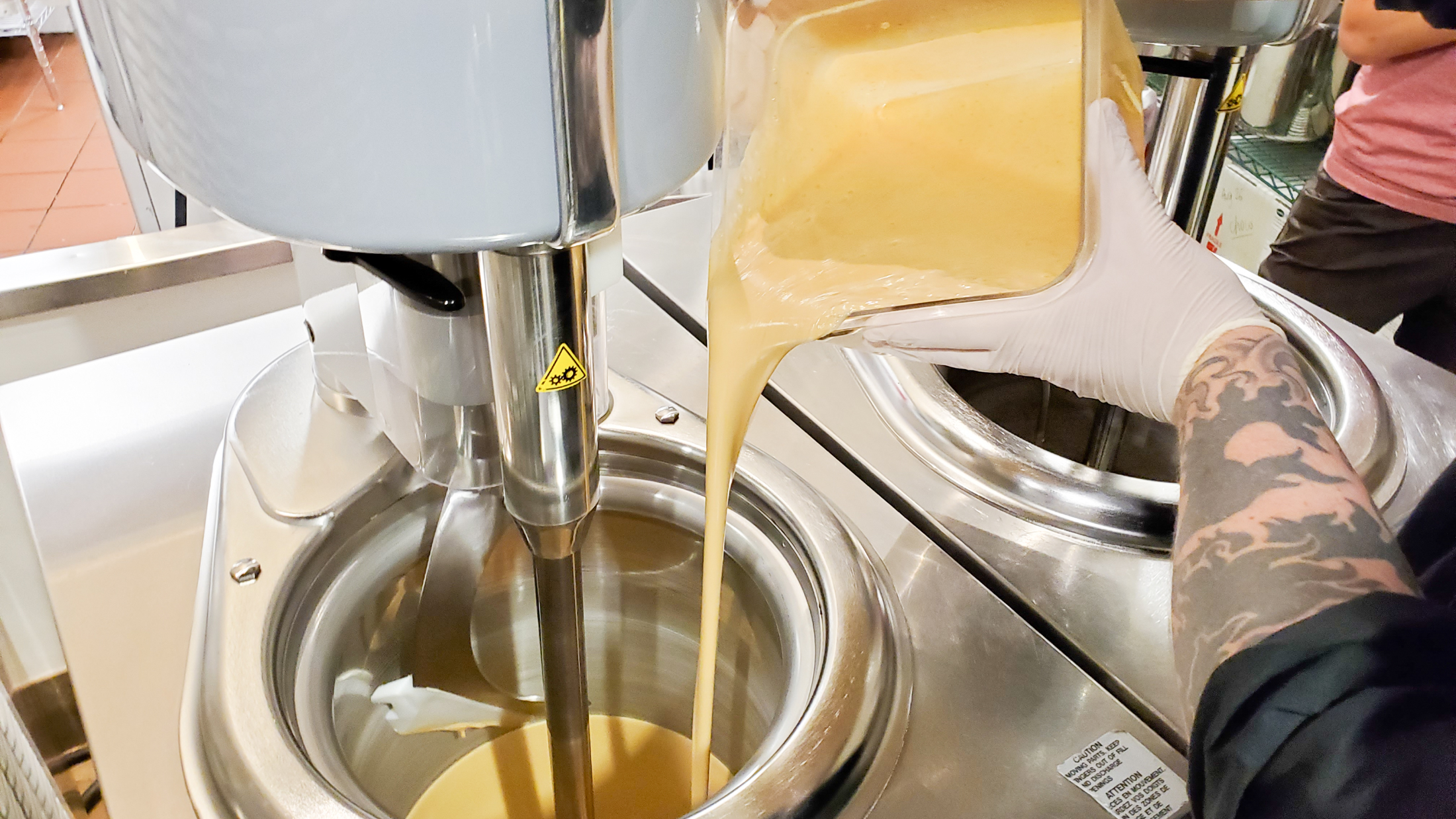
4. Aim for purity when using premade nut pastes
Not all nut pastes and butters are created equal. Check the ingredients list on your jar to ensure that you are adding the intended flavour—beware of added sugars, oils, or other nuts that may throw off taste and consistency. Better yet, make your own by throwing some nuts and a little bit of oil into a food processor
5. Pre-chill those chunks
Chunks add texture, flavour, and maybe even a splash of extra fun to gelato. They could be pieces of fruit, chopped nuts, or, in the case of our gelato class, bits of cheesecake crust. It is never a bad idea to stick your chunks in the fridge before mixing them in, though once they’re added they’ll adapt to the gelato’s temperature. Mmmm, cheesecake chunks!
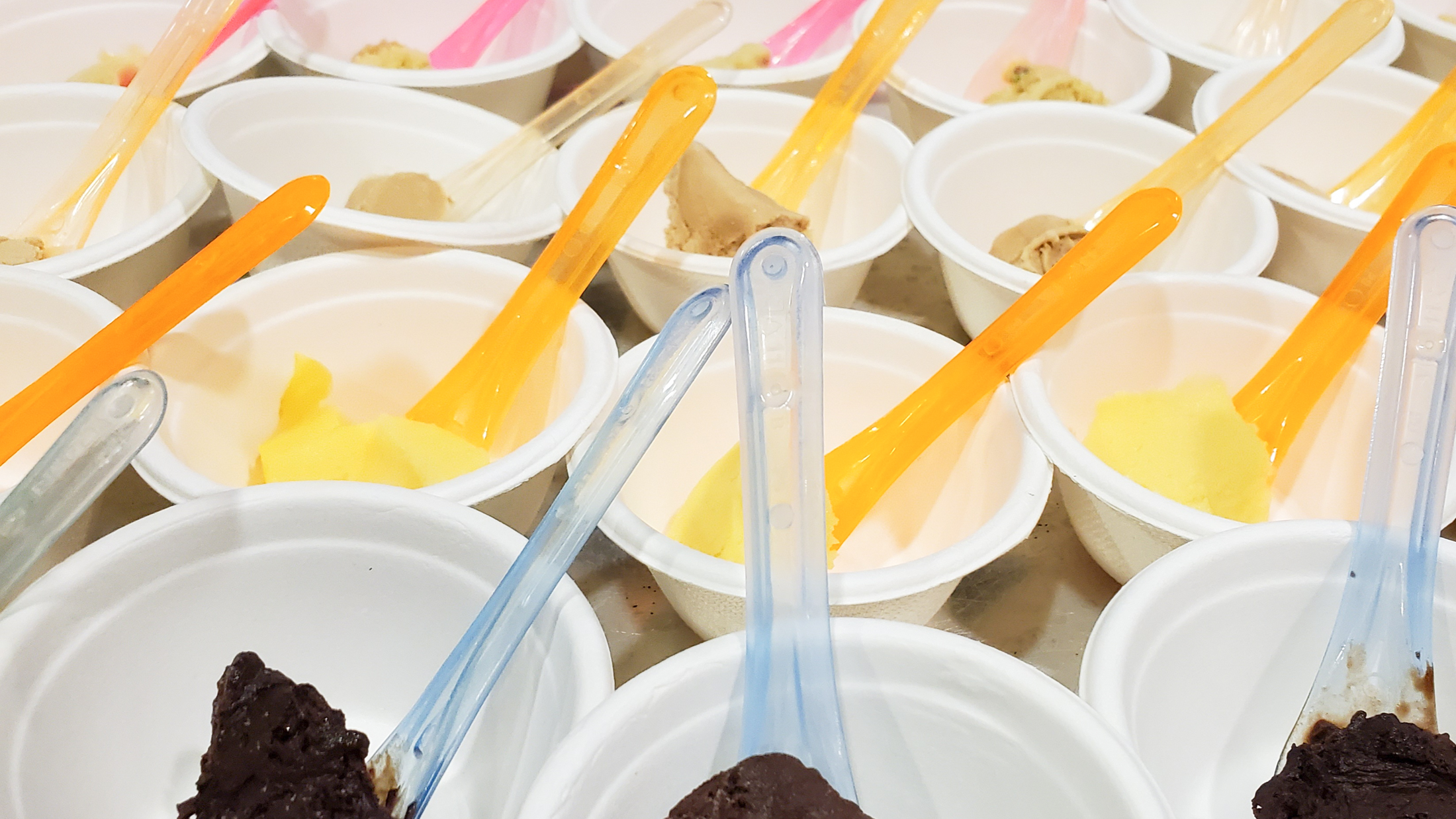
Read more tips from local chefs from the Food and Drink section.

